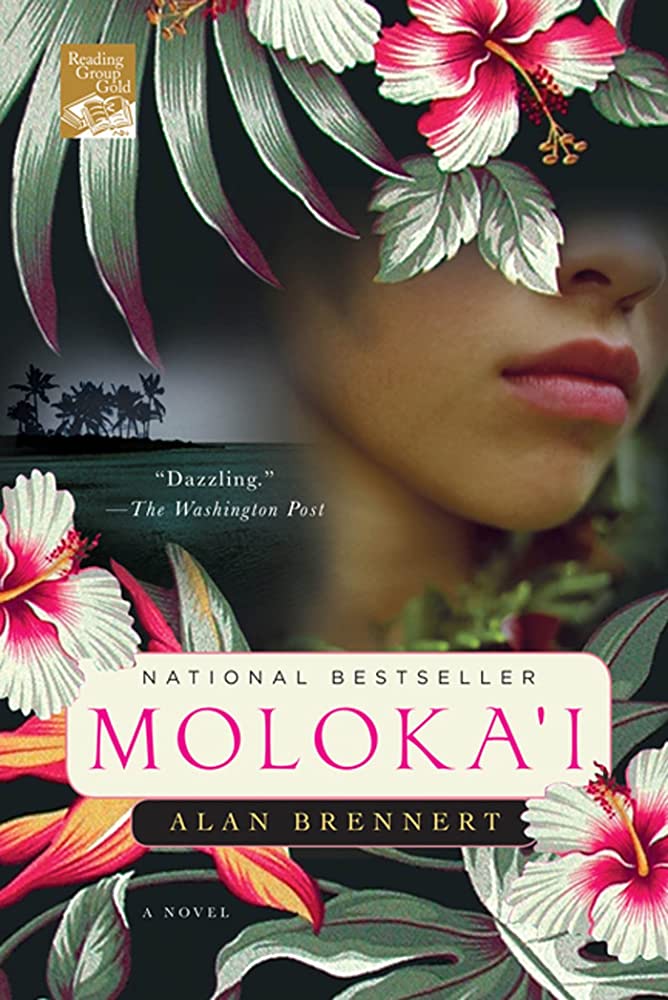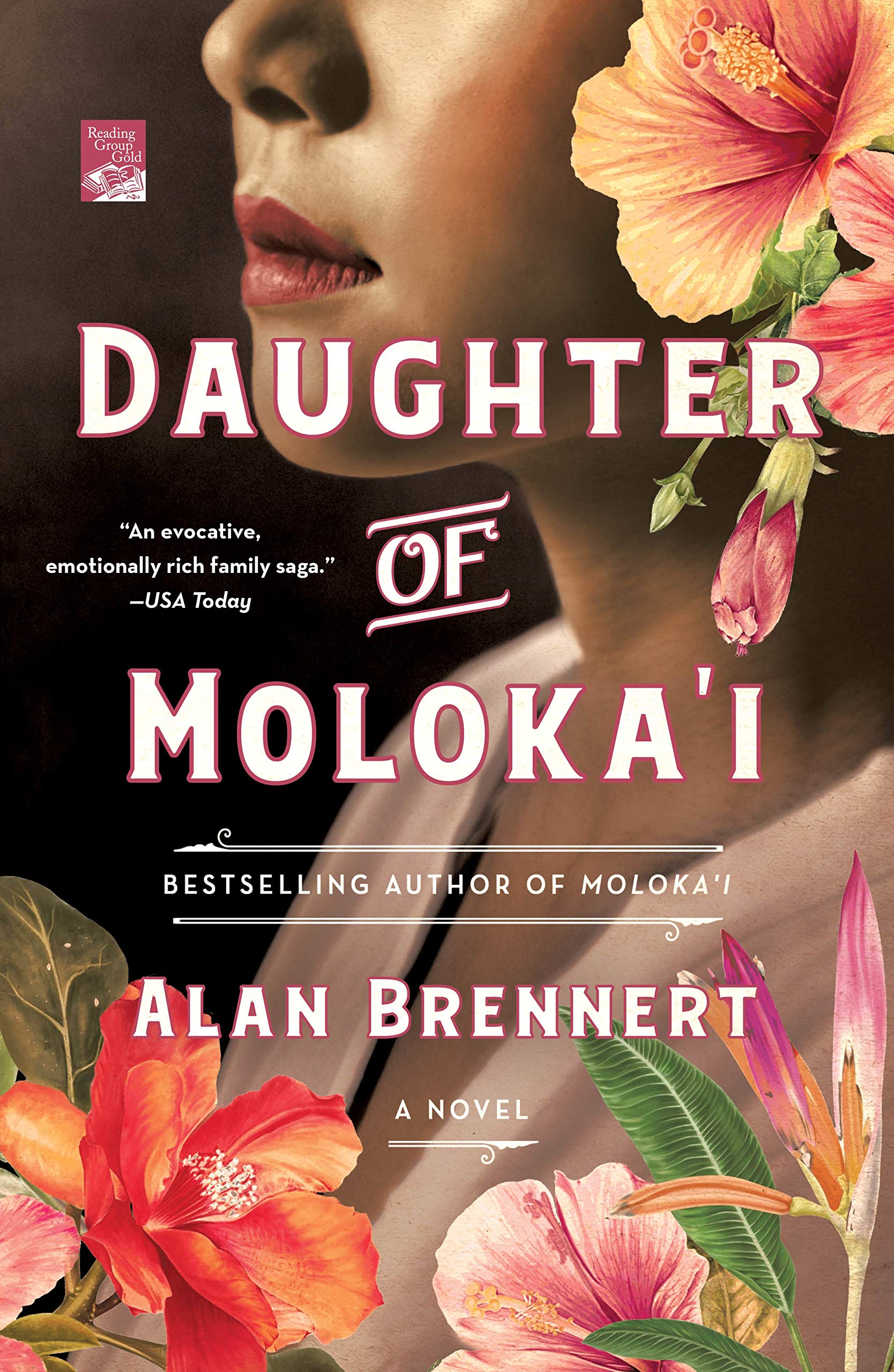

Moloka’i
-and-
Daughter of Moloka’i
by Alan Brennert
St. Martin’s, 2003 and 2019
Reviewed by Barbara Free, M.A.
I was interested in reading these books for several reasons. The first is that I always wanted to go to Hawaii, and I had learned sometime in high school that the island of Moloka’i was more remote and less populated than, for instance, Oahu, and that it had been the site of a “leper colony,” a settlement of people who had Hansen’s disease, then called leprosy. They had originally been exiled there by the government, as the disease was at that time considered highly contagious, which it is not. Later, when there was better treatment and less fear, people could leave if they chose, but some decided to remain, especially those who had lived there a long time. I had learned about Father Damien, the Catholic priest who went there to serve the residents and who eventually contracted leprosy himself; but he would have stayed there anyway. I became interested in the disease, because I had acquired, at twelve years of age, a mysterious skin problem of unknown origin, which caused long-lasting and unsightly lesions. When one is twelve years old, that is difficult to accept, and other people don’t want to see, let alone touch, one’s skin. Various treatments were prescribed, all very embarrassing, but also ineffective. Doctors were always reminded that I was allergic to sulfa drugs, but they tried some anyway, including Dapsone, used for stubborn cases of leprosy. That’s when I started being interested in the disease and learned it is now called Hansen’s disease. In college, I did a research paper on the disease and various treatments and so-called colonies around the world. I nearly died from one doctor’s prescription of another sulfanilamide, and have not taken any since. I learned to accept my condition and it gradually almost went away, although not entirely.
The other aspect of these two books that really interested me is that they are the story of a little girl, diagnosed with leprosy and exiled to Moloka’i at the age of five, isolated from her family and friends. She never saw her mother again. She grew up there, eventually married a fellow resident, and they had a baby, which they knew they would have to relinquish immediately and permanently. The mother, Rachel, was Hawaiian and the father, Kenji, was Japanese. He had been completely disowned by his family, while Rachel still had contact with her father, and an uncle also lived on Moloka’i. The baby was born at night, delivered by the uncle’s common-law wife, a healer, and they spent a few hours with the baby, a girl they named Ruth, before relinquishing her. They did request that her given name be kept. They saw her a few times, at a distance, before she was taken to an orphanage. Reading that part brought up my own relinquishment memories and issues, and I realized that birth mothers in my time—the 1960s and before—were treated very much like “lepers.” We were told we must never tell anyone about our pregnancy, perhaps not even a spouse; we were to go away somewhere, perhaps to a “home for unwed mothers,” as if we were contagious or criminals. At some of these places, the residents (inmates, for practical purposes) were made to go by false names and not divulge any personal information, nor have any contact with the other residents after giving birth and leaving. I did not go to such a place, and I always told close friends and certainly my husband, but the feeling of being unacceptable, of having to keep the secret, and the grief of not having contact with or knowledge of my first son, was very much like being a “leper.” Other birth mothers I have talked to, especially after reading these two books, said that was an accurate description of their memories and feelings, too.
In these two books, Rachel and her daughter are eventually reunited (Kenji had been killed) and Rachel had left Moloka’i after new treatments slowed progression of her disease. The first book is largely from her viewpoint, the second more or less from the daughter’s, although the author tends to switch viewpoints to various other characters. He states that he did a lot of research, which he did, but there are some things he got really wrong. For instance, he had the name of The Church of Jesus Christ of Latter-Day Saints (the Mormon Church) wrong and mentioned their “pastors,” which they don’t have, and also referred to “The Buddhist Church” and its “priests.” These seem like small details, but could easily have been corrected. He also did not have a clue about young females’ physical sexual feelings. Granted, he is a man, but he might have asked some women! However, it is, overall, very well written and gives an accurate picture of those years, 1891-1970, and does convey the trauma of someone diagnosed in those early years, separated from family and friends, and how she coped and lived a long and meaningful life. It also portrays the prejudice against Japanese families before and during World War II, and even after, and the daughter, Ruth, who has to deal with being Japanese but also half Hawaiian, looked down upon by some of her extended adoptive family for not being “pure” Japanese and for being adopted.
The women’s reunion and developing relationship with each other and both families is almost too good to be true, but a reader with adoption connections will find both comfort in the portrayal but sadness in acknowledging that those relationships are not always that harmonious nor satisfying. Persons with adoption connections can use these two books as springboards for exploring their own issues, for helping others understand the issues better, and for opening up some discussion of feelings and memories. Those with similar histories of health issues, especially chronic skin conditions, may find they have more trauma than they realized, and current television commercials for some medications, which lower one’s immune system, would have the viewer believe that one is “untouchable” and undesirable, even at the age of ten, unless they take these expensive, dangerous, but supposedly magic, medications. How does that affect a child, or anyone with a condition they did not bring upon themselves? Such messages can also cause deep and lasting trauma, as bad as the condition itself, just as “leprosy” did in the past, and being an unmarried mother did in the past.
Excerpted from the February 2023 edition of the Operation Identity Newsletter
© 2023 Operation Identity